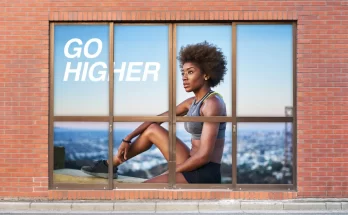In the modern workplace, organizations have started to realize that blanket, one-size-fits-all incentive programs often miss the mark when it comes to truly motivating and rewarding employees. Every team is unique, composed of individuals with their own interests, motivations, and definitions of what’s rewarding. That’s why, according to the experts at Motivation Excellence, savvy businesses are taking the time to craft custom employee incentives tailored to fit the specific makeup and needs of their distinct teams for maximum engagement and impact.
Understand Team Personas
The first step in creating resonant incentives is developing a clear understanding of the predominant personas, backgrounds and what genuinely motivates your team members. Gathering this intel through surveys, focus groups, and manager insights provides invaluable direction.
Involve The Team
Rather than unilaterally designing incentive initiatives, the best approach involves team participation and co-creation from day one. Not only does this crowdsource great ideas, but it also drives buy-in and personal stake in the custom employee incentives that result. Appoint representatives to provide guidance and test concepts.
Align With Goals
Any incentive program worth its salt must align back to the key goals, KPIs and growth areas you’re striving to impact as an organization. Define those specific targets first, then reverse engineer rewarding behaviors and metrics. For example, celebrating cost-savings innovations, service achievements or project milestones.
Brainstorm Creative Options
Once objectives are outlined, it’s time to get imaginative with the types of rewards, recognition, privileges, and experiences that could potentially motivate your team. Crowdsource suggestions like bonus vacation days, lunch celebrations, training opportunities, flex schedules, VIP parking spots, team merchandise, award ceremonies, peer kudos platforms, and more.
Foster Healthy Competition
Injecting friendly competition between individuals or teams can be a powerful performance driver when crafted respectfully. Gamification like points/badges, contests and leaderboards satisfy our innate drives for status, community, and achievement. But avoid creating unhealthy divides or categories that could make anyone feel excluded.
Ensure Equity & Attainability
It’s crucial that the criteria, requirements and rewards provided through employee incentives feel fundamentally fair and attainable to employees across all levels and roles. No one should feel the system is inherently stacked against or favoring certain groups of people over others. Model expected achievement ranges to find appropriate balance.
Allow Autonomy
Part of what makes incentives engaging is allowing individuals some level of autonomy to determine how they achieve goals and what specific rewards they’re working toward. Provide choices around how people prefer to be recognized or what perks they would most value earning. Freedom and flexibility breed higher motivation.
Celebrate Successes
Be sure to build in celebration components and cascade rewards/recognition from both formal corporate channels and peer-to-peer shout-outs. The more you reinforce when individuals or teams achieve milestones, the more motivating your custom employee incentives become. Embrace both public praise and personalized gratitude.
Maintain Transparent Comms
Regular, proactive communication is essential to getting maximum enthusiasm and participation around incentive programs. Provide clear goal metrics, performance updates, leaderboard standings, success stories and promote how employees can get involved. Ambiguity and information vacuums breed apathy and disengagement.
Remain Flexible
The most effective employee incentives are extremely dynamic, evolving alongside changes in team composition, business objectives and engagement levels. Be prepared to course correct incentive structures, modify requirements, rotate rewards, and seek continuous team feedback. Programs that grow stale lose their motivational power.
Conclusion
Taking the time to truly understand the shared and individual motivations of your specific teams means organizations can craft strategic incentive initiatives that provide meaning, value and drive the desired performance outcomes. Rather than force-fitting generic programs, custom employee incentives personalize the experience in ways that heighten enthusiasm and emotional investment.




